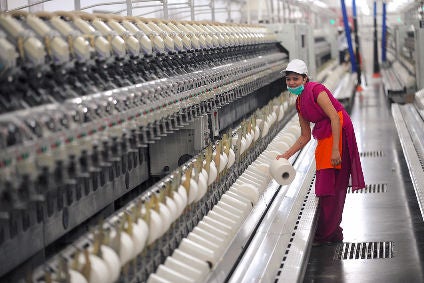How is it possible that an industry that, for all practical purposes, is dominated by a single season can become one of the world’s largest garment exporters? David Birnbaum takes a closer look at the Indian garment anomaly.
If we look at the changes in global garment exports from 2001 to 2016, we can see that India is doing pretty well. Not only does India rank 6th among garment exporting countries, its annual increases rank 3rd, with only Bangladesh and Vietnam doing better. In 2017, India should look even better, particularly as Bangladesh is moving into decline.
The rest of the world operates with two major seasons – autumn/winter and spring/summer – with autumn/winter accounting for the lion’s share of business. India, on the other hand, relies on lightweight garment exports suitable for spring/summer. Autumn/winter plays a relatively small role.
We know the reasons why India produces limited goods for autumn/Winter. The Government of India makes it very difficult to import the fabric necessary to produce garments suitable for cold weather. Since India’s textile industry is concentrated in cotton fabrics, garment makers simply cannot obtain the necessary materials. This is the classic captive customer syndrome: either buy from us or do without.
Of all the major garment exporting countries, only Cambodia imports less than India. Note that countries with world class domestic textile producers such as China, Italy and Turkey are themselves among the largest textile importers, which is one of the major reasons why their garment industries continue to prosper.
Here is India: an industry blocked from importing winter-weight textiles, forced to operate as what is effectively a single season producer but nevertheless still ranks 6th in the global garment exporting world.

US Tariffs are shifting - will you react or anticipate?
Don’t let policy changes catch you off guard. Stay proactive with real-time data and expert analysis.
By GlobalDataThe answer is in the data. India has found an importer where the temperature averages 36oC. The United Arab Emirates (UAE) is India’s second largest customer and effectively keeps India’s garment makers in business during the months when India’s competitors are busy making autumn/winter goods.
The charts below show India’s monthly exports to the UAE compared with India’s exports to its other major customers.
Knit garment exports peak in March and thereafter decline until rising again in December. Fortunately, declining demand for knit garments is not that great, when compared to wovens. India’s industry is even more fortunate because not only is the UAE a 12-month a year customer, its demand for knit garments peaks September/October, which is the lowest period of demand for India’s other knit garment customers.
Knitted garments, particularly T-shirts and polo-shirts, may be relatively unaffected, but not so wovens – which account for 53% of India’s total garment exports. The real problem occurs with woven garments, which peak in March and drop precipitously until rising again in December. While UAE may to some degree moderate the decline, its ability to effect change is limited. May-September is a period where workers are laid-off and factories give back most of the spring/summer season profits.
Imagine the benefits, not just to the garment industry but to unemployment and to the economy as a whole, if India’s garment factories could move from a half-year to a 12-month-a-year business
The Government of India need only unlock the jail cell door to allow its garment industry to compete on an equal footing with China, Italy and Turkey.



